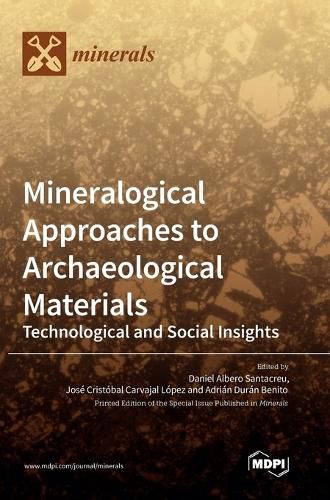Readings Newsletter
Become a Readings Member to make your shopping experience even easier.
Sign in or sign up for free!
You’re not far away from qualifying for FREE standard shipping within Australia
You’ve qualified for FREE standard shipping within Australia
The cart is loading…






This title is printed to order. This book may have been self-published. If so, we cannot guarantee the quality of the content. In the main most books will have gone through the editing process however some may not. We therefore suggest that you be aware of this before ordering this book. If in doubt check either the author or publisher’s details as we are unable to accept any returns unless they are faulty. Please contact us if you have any questions.
Archaeometry is based on the necessary interdisciplinary relationship between diverse branches of the natural and social sciences. This relationship is essential in archaeology, since, from physical materials (objects), scholars have to face questions that go beyond the limits of the tangible and pertain instead to abstract and social concerns. Currently, archaeometric studies are fundamental to the accurate classification and characterization of archaeological materials, providing relevant data, among other aspects, about their production, function and social meaning. In this book, we present a set of papers that show the potential of mineralogical studies (e.g. petrography, mineral geochemistry, X-ray Diffraction) and multiproxy approaches to characterize the composition of a wide diversity of archaeological materials such as ceramics, terracotta, tiles, metals, glazes, glass and mortars related to several periods (Bronze Age, Roman, Middle Age, Modern period). In this sense, this book can be of interest for specialized researchers who seek specific case studies and are mainly concerned with certain kinds of materials, but also for those students, researchers and professionals who look for a practical overview of the chief methods that can be followed in the study of material culture.
$9.00 standard shipping within Australia
FREE standard shipping within Australia for orders over $100.00
Express & International shipping calculated at checkout
This title is printed to order. This book may have been self-published. If so, we cannot guarantee the quality of the content. In the main most books will have gone through the editing process however some may not. We therefore suggest that you be aware of this before ordering this book. If in doubt check either the author or publisher’s details as we are unable to accept any returns unless they are faulty. Please contact us if you have any questions.
Archaeometry is based on the necessary interdisciplinary relationship between diverse branches of the natural and social sciences. This relationship is essential in archaeology, since, from physical materials (objects), scholars have to face questions that go beyond the limits of the tangible and pertain instead to abstract and social concerns. Currently, archaeometric studies are fundamental to the accurate classification and characterization of archaeological materials, providing relevant data, among other aspects, about their production, function and social meaning. In this book, we present a set of papers that show the potential of mineralogical studies (e.g. petrography, mineral geochemistry, X-ray Diffraction) and multiproxy approaches to characterize the composition of a wide diversity of archaeological materials such as ceramics, terracotta, tiles, metals, glazes, glass and mortars related to several periods (Bronze Age, Roman, Middle Age, Modern period). In this sense, this book can be of interest for specialized researchers who seek specific case studies and are mainly concerned with certain kinds of materials, but also for those students, researchers and professionals who look for a practical overview of the chief methods that can be followed in the study of material culture.